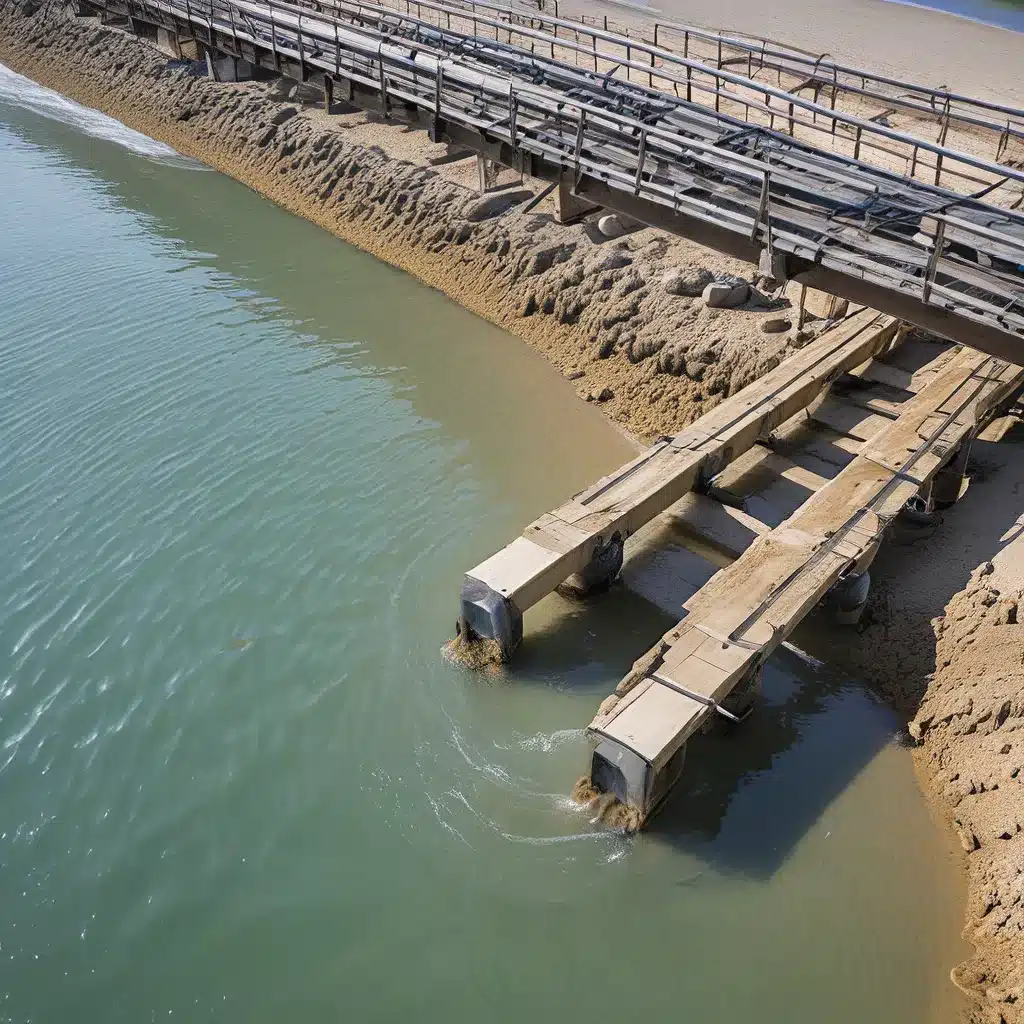
Dive into the Depths of Water Treatment Safety
As the world’s climate continues to shift, the tides of water treatment are rising to meet the challenge. The complexities of maintaining safe, reliable water supplies in the face of unprecedented environmental changes are daunting, but there’s no time to tread water.
Climate change has already ceased to be a problem of future generations in many regions, with the Middle East being one of the hardest hit. Here, water scarcity is a defining issue, exacerbated by changing demographics and poor management. But this crisis also presents an opportunity – one that forward-thinking organizations are seizing to navigate the choppy waters ahead.
Charting a Course with a “Green Blue Deal”
In the Middle East, the EcoPeace environmental peacebuilding organization has proposed an innovative “Green Blue Deal” to address the region’s water woes. The core idea? Harness the sun and the sea – two of the most abundant natural resources in the area – to create healthy regional interdependencies, promote trust, and foster cooperation.
The four key pillars of this plan are:
-
Cooperation to Improve Adaptive Capacities: By creating a desalinated water-solar energy community, the countries of Israel, Palestine, and Jordan can leverage their individual strengths to enhance water and energy security for all.
-
Advancing Israeli-Palestinian Water Reallocations: Advancements in water technology mean Palestinian water rights can be achieved without reducing availability on the Israeli side, paving the way for a more equitable distribution.
-
Developing the Jordan Valley: Investments in climate-smart initiatives and green jobs can breathe new life into this vital but threatened water source.
-
Promoting Water and Climate Diplomacy: Education programs that foster cross-border networks and awareness of transboundary issues can help build a culture of cooperation and peace.
Ambitious? Absolutely. But as EcoPeace directors point out, the water issue may be a relatively “low-hanging fruit” in the complex Arab-Israeli conflict. Decoupling it from the broader peace negotiations could create a much-needed precedent for collaboration.
Weathering the Storm: Coastal Resilience Solutions
While the Middle East grapples with water security, coastal communities around the world are facing their own rising tide of challenges. From rising sea levels and storm surges to coastal erosion and loss of marine habitats, the impacts of climate change are acutely felt along our shorelines.
As the global population at risk of coastal flooding is projected to increase fivefold by the end of the century, the need for innovative, future-proof solutions has never been more pressing. And that’s where visionary companies like Jacobs are making waves.
“Recognizing the scale and complexity of the coastal resilience challenge, authorities around the globe are looking to develop frameworks to co-ordinate their response,” explains Adam Hosking, Jacobs’ Global Director for Water Resources and Resilience Solutions. “In recent years, Singapore PUB has established a Coastal Protection Department, and in New York City, a Bureau of Coastal Resilience was created to bring all flood risk management activities into one place.”
This kind of coordinated, programmatic approach is essential, Hosking says, to ensure consistency in planning, design, and delivery of resilience outcomes – both in the near- and long-term. But the solutions themselves must also evolve beyond traditional “hard” engineering measures.
“We need to think differently about coastal resilience and move away from building isolated hard structures along the coastal edge,” Hosking advises. “Ultimately, resilience measures should not reduce access to waterfronts – often the lifeblood of the local community – but enhance it, creating positive community impact and improving both social and economic resilience.”
Navigating Uncharted Waters: The Role of Technology
As water treatment professionals grapple with the mounting challenges of climate change, they’re turning to the latest technological advancements to chart a course through the uncertainty. Resilience – the ability to survive, recover, adapt, and thrive in the face of potential threats – is a key attribute of a “smarter planet”. And the companies leading the way are those that can seamlessly integrate complex interfaces across planning, procurement, and delivery.
Take the water sector, for example. Jacobs has been providing design-build and design-build-operate capabilities for over 25 years, tackling the most complex water challenges with fully integrated solutions. From advanced wastewater treatment to water reuse programs, their expertise spans the full spectrum of resilient water supply and management strategies.
But the role of technology extends far beyond the water infrastructure itself. Digital solutions and data-driven insights are crucial for helping governments and businesses navigate the critical challenges of climate change, modernizing infrastructure, and building a prosperous, secure future.
As the tides of change continue to rise, the water treatment industry must be ready to adapt and innovate. By embracing a holistic, technology-enabled approach, we can navigate the choppy waters ahead and keep our communities afloat.
Downstream Impacts: The Ripple Effects of Water Treatment Safety
The importance of robust, sustainable water treatment practices extends far beyond the immediate challenge of providing clean, reliable H2O. When coastal communities are threatened by climate change, the economic, social, and environmental consequences can be catastrophic. And as the Middle East demonstrates, water scarcity is inextricably linked to regional stability and the prospects for peace.
That’s why organizations like Inland Waters are taking a holistic, forward-thinking approach to water treatment safety. It’s not just about maintaining water quality standards – it’s about safeguarding the future of our communities, our economies, and our planet.
From innovative desalination and water reuse technologies to nature-based coastal resilience solutions, the water treatment industry is uniquely positioned to navigate the tides of change. But to do so, we must be willing to think beyond traditional boundaries and embrace the power of collaboration.
After all, when it comes to the health of our water systems, we’re all in the same boat. By working together to develop creative, sustainable solutions, we can ensure that the future remains buoyant, no matter how high the waves may rise.


